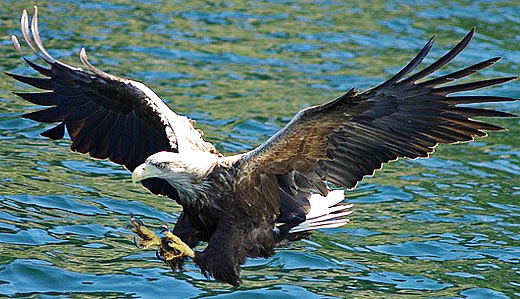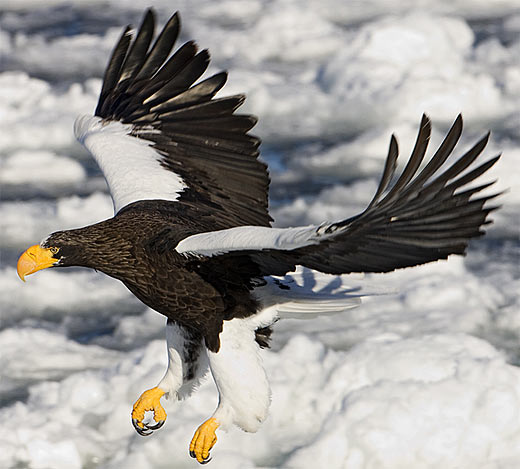Sea and Fish Eagles

European Sea Eagle
There are eleven species of sea and fish eagles. They live along all the world’s oceans and inland along large lakes and waterways, except for Latin America. All have bare legs and have some white plumage either on their heads or on their backs. Two of the most familiar and most widespread of the sea eagles are the bald eagle of North America and the European sea eagle of Eurasia. The largest is the Steller’s sea eagle which has an eight-foot wingspan and can weigh 15 lb (6.8 kg). These powerful eagles feed mainly on live or dead fish but are capable of taking a seal’s calf. The smallest species is the Madagascar fish eagle which eats crabs and fish.

Steller’s Sea Eagle
Sea eagles often build large nests out of sticks in trees, in sea stacks, or on ledges. Fish are the dietary mainstays but occasionally a gull or other water bird may serve as a meal. They also scavenge carrion along beaches, waterways, and offshore islands. Some pirate food from other birds such as the osprey. Sizable numbers of bald eagles spend the winter along the coasts of the Pacific Northwest. Another fairly large population in the US lives in the Rockies, where their food is mostly jackrabbits and other medium-sized mammals. Because of their main diet of fish, the sea and fish eagles have proven most susceptible to chlorinated hydrocarbon pollution, which accumulates in their tissues and reduces nesting success and productivity. Several are considered threatened or endangered, although captive breeding programs have successfully led to the recovery of the bald eagle. Included in this group is the vulturine fish eagle of southern Africa, which feeds on parts of the oil palm tree along with some crabs and fish. Some call it the palm-nut vulture.
